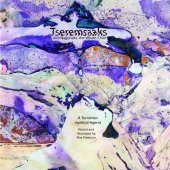 Neuerscheinungen 2019Stand: 2020-02-01 |
Schnellsuche
ISBN/Stichwort/Autor
|
Herderstraße 10
10625 Berlin
Tel.: 030 315 714 16
Fax 030 315 714 14
info@buchspektrum.de |

Roy Freeman
Tseremsaaks, and Nagunaks, the Whale-Chief
A Tsimshian mythical legend retold and illustrated by Roy Freeman. Bilderbuch
2019. 48 S. Illustrations to a mythical legend from the native peoples of the Canadian Pacific Coast. 2
Verlag/Jahr: TAOTIME 2019
ISBN: 3-906945-05-7 (3906945057)
Neue ISBN: 978-3-906945-05-7 (9783906945057)
Preis und Lieferzeit: Bitte klicken
The fishermen who learned the dances of the whale
A mythical legend from the native peoples of the Canadian Pacific Coast. The illustrations by Roy Freeman evoke deep echos of the themes of human beings and nature. They inspire fantasy, inviting the story to come alive with their shapes, forms, and colors. A book to explore and enjoy, for all ages.
The fishermen who learned the dances of the whale
A mythical legend from the native peoples of the Canadian Pacific Coast. The illustrations by Roy Freeman evoke deep echos of the themes of human beings and nature. They inspire fantasy, inviting the story to come alive with their shapes, forms, and colors. A book to explore and enjoy, for all ages.
About this story
The Coast Tsimshian People of British Columbia are an ancient indigenous culture comprising many tribes and clans such as Laxsgiik (Eagle Clan), Gispwudwada (Killer Whale Clan), Ganhada (Raven Clan), and Laxgibuu (Wolf Clan). In the old days, descent was reckoned from mother to daughter: you belonged to your mother´s group (moiety). However, position of social leadership and many kinds of property were held by the men. This meant that among a group of brothers and sisters, things held by the brothers were passed on to their sister´s sons. In other words, every man inherits from his maternal uncle, every girl from her mother. This is why in the end, Tseremsaaks passes his gifts from Nagunaks
on to his sister and her descendants.
The legend of Tseremsaaks was told to the ethnologist Franz Boas between 1891 and 1894 by an old Tsimshian elder from Meqtlak´qa´tla and a Tsimshian woman from Port Essington (possibly Odille Morison). Boas recorded the spoken words and translated them directly into German, his mother tongue. He published this German translation in "Indianischen Sagen von der Nord-Pacifischen Küste Amerikas," Verlag von A. Ascher & Com., Berlin (pp. 291-292) in 1895. For the story here, I translated this German text into English.
In 1968 I was the bait-man in a crew of a small albacore tuna fishing boat off the Pacific Northwest coast. One night when we were after anchovies as live bait, we anchored near the shore in a place very near to where Tseremsaaks and his brothers-in-law anchored. Years later, I created the pictures shown in his book and still many years later ran across this story of Tseremsaaks when I was translating a book on fairytales by Marie-Louise von Franz from German into English.
The First People knew that all life was connected. All people, animals, and plants need to be treated with respect if we are all to survive. In fact, we humans are descended from fish: our bones and internal organs were already laid out in the fish some 400 million years ago when they first began to come on land. This legend helps to remind me of my ancestry and to live in that awareness.
I would like to express my gratitude to the Metlakatla, Lax Kw´alaams, Gitga´at, and Gitxaala First Nations, now living where this story was once told. Part of the royalty percentage from this book will be donated to the Metlakatla Stewardship Program.
Roy Freeman, October 2018


